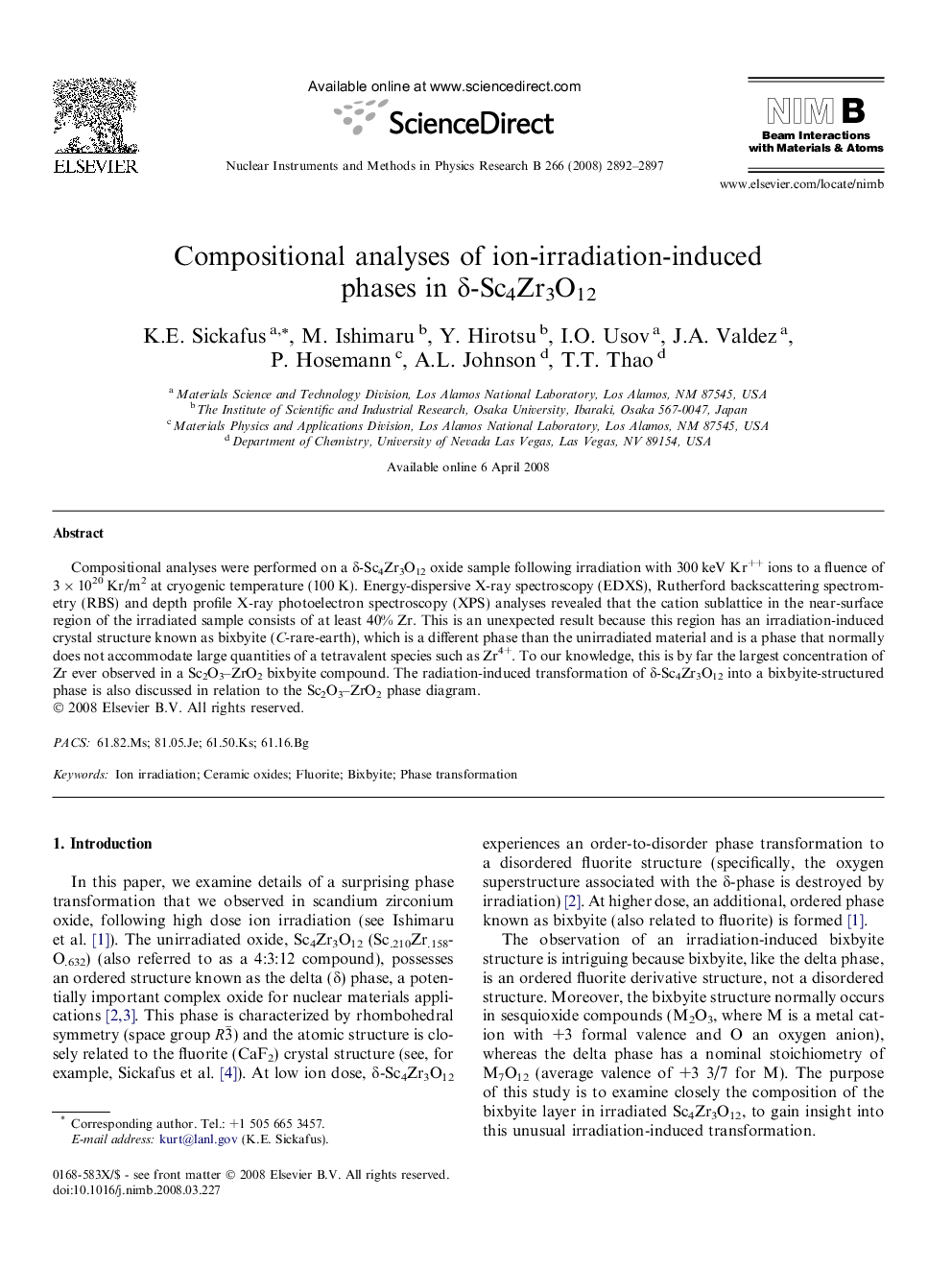| Article ID | Journal | Published Year | Pages | File Type |
|---|---|---|---|---|
| 1686037 | Nuclear Instruments and Methods in Physics Research Section B: Beam Interactions with Materials and Atoms | 2008 | 6 Pages |
Compositional analyses were performed on a δ-Sc4Zr3O12 oxide sample following irradiation with 300 keV Kr++ ions to a fluence of 3 × 1020 Kr/m2 at cryogenic temperature (100 K). Energy-dispersive X-ray spectroscopy (EDXS), Rutherford backscattering spectrometry (RBS) and depth profile X-ray photoelectron spectroscopy (XPS) analyses revealed that the cation sublattice in the near-surface region of the irradiated sample consists of at least 40% Zr. This is an unexpected result because this region has an irradiation-induced crystal structure known as bixbyite (C-rare-earth), which is a different phase than the unirradiated material and is a phase that normally does not accommodate large quantities of a tetravalent species such as Zr4+. To our knowledge, this is by far the largest concentration of Zr ever observed in a Sc2O3–ZrO2 bixbyite compound. The radiation-induced transformation of δ-Sc4Zr3O12 into a bixbyite-structured phase is also discussed in relation to the Sc2O3–ZrO2 phase diagram.
